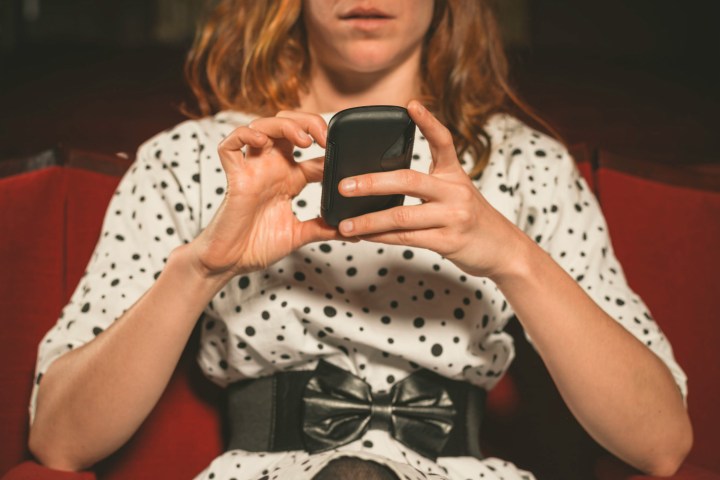
While auditoriums everywhere are grappling with the same issue, the Jermyn Street Theatre in the center of the UK capital says pre-show announcements about smartphone use are failing to get through, leading it to consider more extreme measures such as lasers.
The method is already used in China at the Shanghai Grand Theatre and the National Centre for the Performing Arts in Beijing to shame phone users into switching off their handset.
Although the use of digital devices inside theaters can sometimes be a distraction for on-stage actors – just ask Benedict Cumberbatch about that – their bright screens mean they can also be a serious annoyance for other audience members, too.
Anthony Biggs, the Jermyn Street Theatre’s artistic director, told The Times, “Having somebody sit next to you with their phone on, even vaguely in your eyesight, makes you irrationally angry,” adding, “Maybe it’s not legally wrong, but it makes you want to kill them anyway.”
No, Biggs isn’t backing the idea of using lasers to burn out the eyeballs of offending audience members, in fact, the risk of an accident is one of the factors that could lead the theater to abandon the idea. It also realizes that the lasers themselves could be a distraction, and may not even be enough to stop someone looking at their phone.
Writing on Facebook, Biggs said he wants to explore a range of methods “to encourage our audiences to view a theater performance as a period of joyous release from the tyranny of the smartphone, a time when no one can contact us, and where we can immerse ourselves fully in make-believe. Even if only for a few hours.”
It’s an admirable plan, though many people will be thinking, “Good luck with that.”
Smartphones in theaters are also a problem for the folks trying to entertain us. In a famous incident a few years back, Kevin Spacey was interrupted by a handset’s ringtone during a performance in a one-man show.
Straight-faced and remaining in character, quick-thinking Spacey snapped at the phone’s owner, “If you don’t answer that, I will,” a response that resulted in a rapturous round of applause from everyone in the audience. Well, almost everyone.
Editors' Recommendations
- What they don’t tell you about wearing a camera on your face
- The iPhone 15 may finally get reverse wireless charging — but I don’t want it
- You don’t need a gaming phone to seriously love mobile games
- Don’t let your iPhone connect to Wi-Fi networks with this name
- Apple isn’t making a foldable iPhone anytime soon, so don’t get your hopes up


